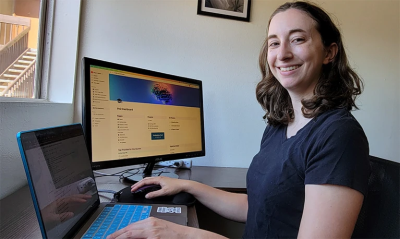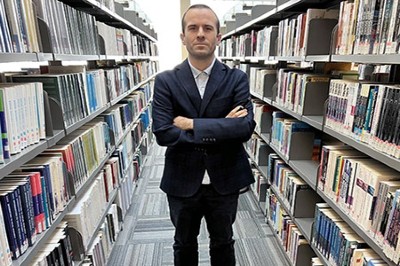

Be brutally honest with yourself about what projects you need to let go, don’t let them pile up.Credit: Getty
Scientists can decide how to prioritize their time and research projects by comparing the pros and cons. But many such decisions can be skewed by guilt, peer pressure, stubbornness or the fear of wasting energy already invested (the sunken-cost fallacy). It could be the dissertation chapter that still isn’t published or the group project in which every calendar reminder causes dread. These projects linger without making progress, taking up mental space and emotional energy.
The business world calls them zombie projects, and in the research world, in our experience, they can prevent you from growing as a scientist. As specialists in a number of fields, we offer tips to slay your zombies.
What makes an undead project?
Zombie projects can stick around because of inertia, or because of a cognitive bias or emotional weight that drives us to continue to commit to them despite logical reasons to let go.
Take R.L.N, for example, whose project became a zombie when she thought that she had completed her tasks, only to have them resurface for edits, additions and consulations. They became less attractive every time they appeared on her to-do list but were sustained by the obligation she felt to the participants and collaborators. A.R.S. has had two unpublished dissertation chapters on her to-do list for six years. She still finds the ideas compelling, but the projects now drain her energy. N.U.’s project stalled from lack of resources when a student collaborator graduated before the data were analysed, and there was no funding for a replacement. She knows that she should let it go, but she remembers the contribution that the project could’ve made, and so it lingers. A.E.C. joined a team project with an ambitious goal, but a lack of time and resources, as well as the need for coordinated team decisions, made the project difficult both to achieve and to let go.
Why I use Notion to organize my PhD research
We all take part in weekly feedback group meetings discuss how to deal with our undead projects. Sometimes we realize that a project does have good reason to be completed, such as an obligation to a funder or a strong benefit for a student or junior colleague, but at other times we realize that we are continuing to invest in a project that does not advance our goals.
What do you do with an undead research project?
You have three basic choices:
1. Reanimate it and complete the unfinished business. This is most suitable for projects that still have value, either to yourself or to someone else (such as students or funders).
2. Banish it from your life. Best for projects with minimal returns or whose emotional burdens outweigh the benefits.
3. Freeze for future reanimation. Use sparingly. Some projects preserve better than others (for example, some have more perishable data), and your future bandwidth is limited. Most projects should be reanimated or banished.
Reanimation tactics
When reanimating an undead project, your aim is to reduce the energy necessary to complete it. Steps might include:
• Narrowing its scope. Write a perspective or conference paper instead of a full journal article. Publish in a less-selective journal or as a blogpost. If the core of the project has merit, excise that, bury the rotten rest and be ruthlessly efficient as you complete the smaller project. R.L.N. has a piece of her dissertation work that she plans to turn into a short example in her book. The rest she’ll let go. Ensure the redefined scope satisfies whatever emotional itch was compelling you to keep the project in the first place.
Failed PhD: how scientists have bounced back from doctoral setbacks
• Hold a writing retreat or data sprint. Cross the finish line before the deadline or the project ends. Dedicate an amount of time that is reasonable but not luxurious, because constraints help you keep the end in sight. N.U. and R.L.N. held a week-long writing sprint to knock out a paper that they had taken too long to co-author.
• Find reinforcements. Enlist co-authors or hire assistants. Outsource aspects of the project (such as figure creation). A.R.S. enlisted a co-author with technical skills to finish a paper that had otherwise lingered. However, be cautious: if your collaborators or assistants don’t contribute as planned, you might be in more trouble.
Banishment tactics
Whereas reanimation tactics can be combined, banishment is binary: let it go or give it away.
• Accept that the project will never happen. Hold a wake or other ceremony to provide closure. Then purge your files. A.R.S. stores banished projects in a folder labelled ‘X’ to avoid the jolt of anxiety that comes from seeing all those ideas.
• Offer the project in its entirety to a researcher who can see its merits and has the bandwidth to complete it. Unlike recruiting reinforcements, you relinquish all ties to the project but can rest knowing that it’s in a better place. A.E.C. turned over a project idea to a PhD student whom she is not advising.
Freezer tactics
Entomb the project in its entirety (data sets, notes, unfinished drafts). Remove all reminders until you are ready to reanimate (but include detailed notes to help you when that time comes). N.U. put two projects on hold for a year while she dealt with more pressing priorities.
General tips
• Be ruthless. This project is not the same one you remember fondly from five years ago. Kill it or cut it down to size even if that means it doesn’t completely fulfil the dream you once had. Enlist a ‘no committee’ to help.
• Give yourself a reward for clearing undead projects. Do the same for your students and collaborators. Allow for ‘zombie amnesty’, and make it not only acceptable but desirable to let go of unpromising projects. A.R.S. bought herself a video game to celebrate when she finally banished a long-dead project.
ChatGPT use shows that the grant-application system is broken
• Tackle one project at a time. Piecemeal progress on many projects is probably one reason that the projects lingered in the first place.
• Schedule time for zombie-killing. Maybe at the New Year or just before a job performance review. Tidying takes time, which is also a reason not to let undead projects accumulate. Build slack time into your schedule so you can deal with unexpected resurrections.
How can zombie research projects be prevented?
When adopting a project, look for red flags such as unrealistic deadlines, oversized deliverables or overwhelmed collaborators. Conversely, matching time, energy and team composition to project objectives can ensure that you don’t create monsters. Identify ‘kill criteria’ in advance that will help you know when it’s time to quit. Consider how the project might change over time. If you don’t love your project at the start, there’s a higher risk that it will become undead, so consider carefully whether this adorable new project is a responsibility you’ll still want when it’s grown. Tell a friend. If they don’t think you sound excited (or if you aren’t), then say no. Make some room for living, innovative ideas.
Source link







